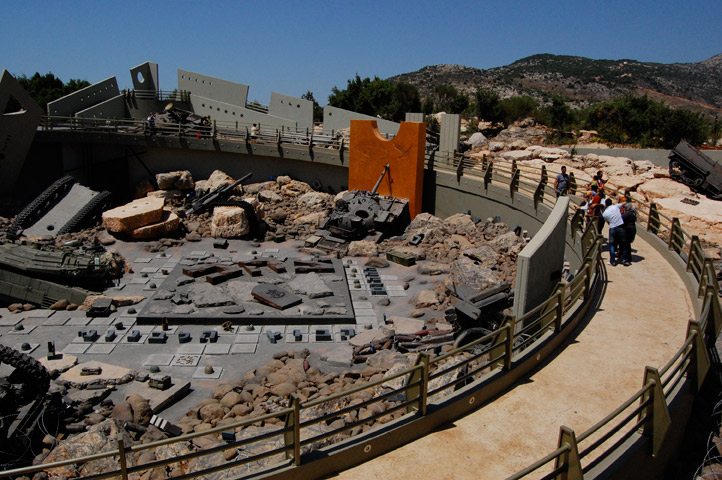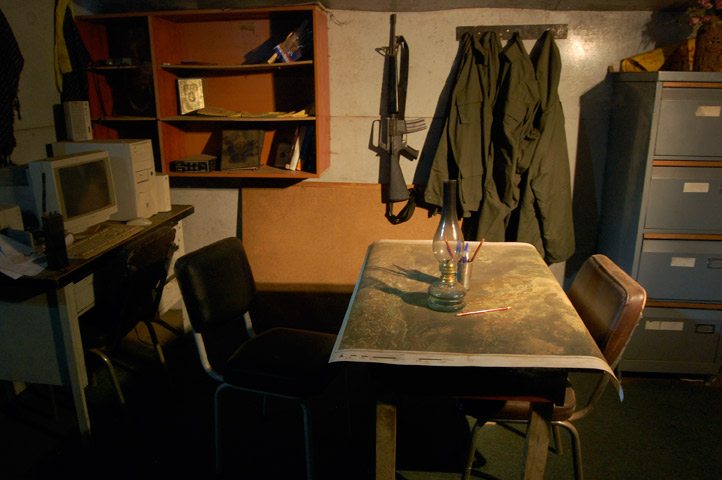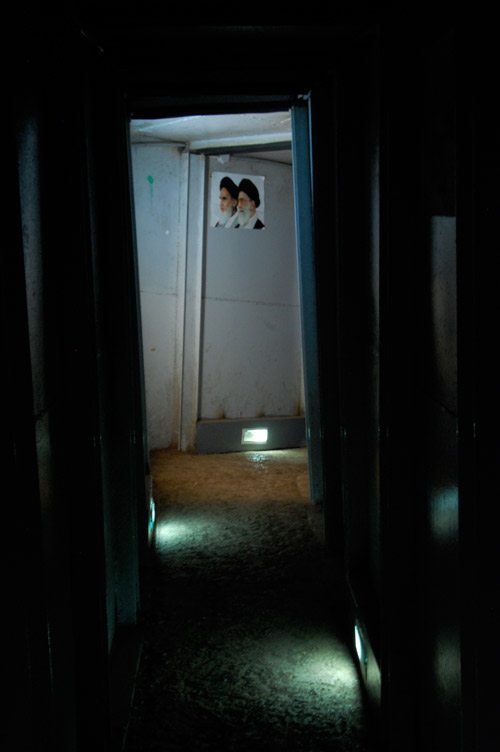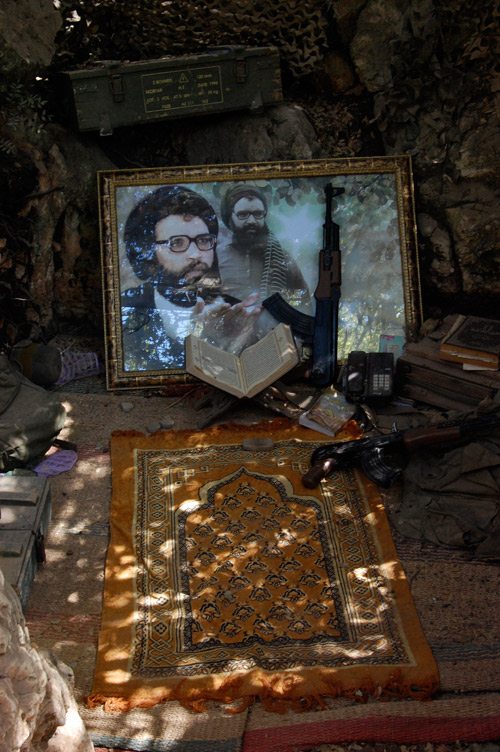A guided tour of the Hezbollah park
South Lebanon, a two-hours ride from Beirut. The SUV drives slowly down the dried-up road. The Israeli border is close. Boards on the side of the road show the way to the now most visited cultural place in the region: Mleeta, the Hezbollah Museum of Resistance.
500,000 visitors in two months
Surrounded by barren mountains, the Mleeta site is 1,050 metres above the sea. A giant parking lot welcomes the visitors who keep pouring in, in spite of the August heat wave. The museum opened only late last May, on a symbolical day chosen by Hezbollah to commemorate the 10th anniversary of the withdrawal of Israeli troops from Lebanon. This piece of land was first occupied by the southern neighbor back in 1982, during the Lebanese Civil War. It later became a Hezbollah stronghold and more recently, in 2006, was the scene of fightings between Hezbollah and the Israeli army.
The museum opened only late last May, on a symbolical day chosen by Hezbollah to commemorate the 10th anniversary of the withdrawal of Israeli troops from Lebanon.
There is no doubt about Hezbollah’s ambitions of attempting a marketing coup: for visiting foreigners, the guided tours are given in six different languages. Snacks and drinking fountains are to be found every five metres. The place must be a tourist attraction before anything else, for Hezbollah to get rid of its image as the evil terrorist group. And it works. From the beginning of the tour, our guide announces proudly that 500,000 people have already visited Mleeta. This looks like an overestimated figure, in spite of the some 200,000 Lebanese who support Hezbollah.

Terrorists’ Disneyland
“You know what they call Mleeta in Israel? Terrorists’ Disneyland,” our guide says with a serious face. Here, The Enemy is not someone you joke about. We enter the first room which displays relics of the Israeli occupation. Empty tuna cans, old rifles and military boots, all showcased as if they were their crown jewels.
Here, The Enemy is not someone you joke about.
On the left wall is a detailed account of how the Israeli army works. The guide explains to us with excitement the names and functions of the army corps. Why then, go public with such classified material? “To show the world that Hezbollah has got top secret information about the enemy’s army,” is our guide’s immediate answer. That the board has not been updated since the opening of the museum does not seem to disturb our guide’s confidence.
In his rhetoric, The Enemy is ever-present. After no more than 15 minutes of listening to his speech, it’s hard to tell if this is the Hezbollah museum or a place dedicated to the ideology of the Israeli army. As a justification, our guide keeps repeating “You have to know your enemy.” As in all propaganda, the adversary is central and without him, the ideology cannot work. The same goes for the ever-present threat of potential future conflict.
As in all propaganda, the adversary is central and without him, the ideology cannot work.
But the first room is nothing compared to the second part of the tour. A giant sculpture entitled “The Abyss” seems to make both guides and local visitors proud. The crowd, with contemplation, slowly circles around it. In the midst, several Israeli tanks fixed in a sea of concrete as if stuck in mud. Between the tanks, big Hebrew letters spell out a message threatening the Israeli airplanes which often fly over South Lebanon.
In case of a conflict though, the Israeli air force will likely not read the message but rather destroy the site. A hypothesis that does not seem to bother Hezbollah, which has invested millions of dollars in constructing the museum. This way, they make clear that their confidence is stronger than ever.
The ring of fire
After “The Abyss,” our guide disappears. The rest of us follow the narrow path leading to the most interesting part of the site. First stop: a little piece of dry land where former Hezbollah General Secretary, Abbas Mussawi, used to come and pray before an attack against the Israeli army. Pine trees surround his small prayer rug, next to which a Quran and an AK-47 rifle lay side by side. Mussawi was killed by an Israeli missile together with his wife and young daughter in 1992. He is now considered one of the most revered martyrs among Hezbollah supporters.
We are now inside the mountain. Here, a stock of weapons. There, a kitchen.
The path descends a few 100 metres until visitors reach the entrance of an underground gallery. A board outside says “The Ring of Fire” in English. The corridors are lined with metal, hot and narrow. We are now inside the mountain. Here, a stock of weapons. There, a kitchen. Further down the corridor, an office: roughly furnished with a wooden table, two chairs and a broken-down computer. Military jackets and guns hang on the wall.
Another corridor, pictures with framed Hezbollah benchmarks lining the walls. Mussawi again, and Iranian leaders Khamenei and Khomeini.

V for victory
It is long since now that Hezbollah was famous only for kidnapping foreigners and organising suicide bombings aimed at Israeli targets. Today, the party is the most influential and powerful political entity in Lebanon. Mleeta is the symbol of this recent development. The infitah, Nasrallah’s formula “From the Party of God to a governmental party,” encouraged the opening of Hezbollah towards both the Lebanese society and the country’s political structures.
Today, Hezbollah is the most influential and powerful political entity in Lebanon. Mleeta is the symbol of this recent development.
A few more loops and turns, the path ends and we reach the exit. Sunlight pours quietly through the branches of pine trees. The beautiful mountain view is framed by two big flags; the yellow and green Hezbollah flag and the Lebanese cedar tree, side by side. Blowing in the wind, they are attached to two big metal bars shaped as a V, symbolising victory. How peaceful these mountains look! But for how long?
14 thoughts on “A guided tour of the Hezbollah park”
Leave a Reply
You must be logged in to post a comment.









This was a very interesting post!
Such a good article. Well done
I like Oplagt
Great articles and nice a website design too :)
Good article.
Cool stuff here!
Mauvaises nouvelles – approfondit la Syrie «mutilation mystère» …